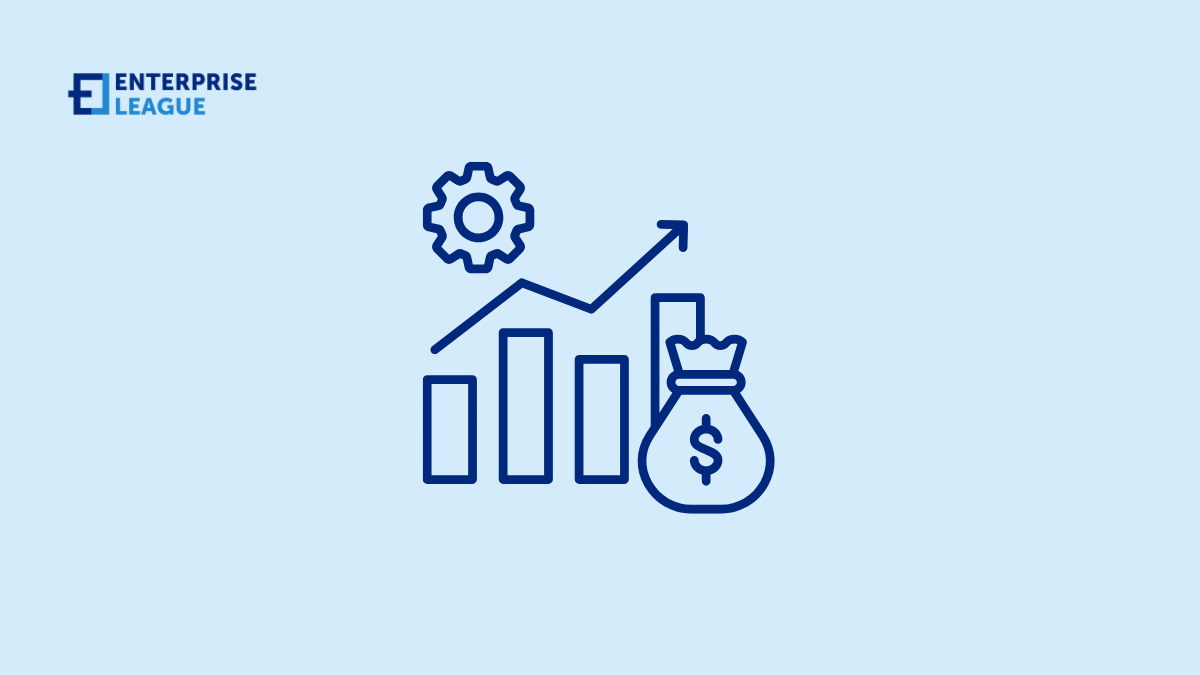A scalable business model lets companies grow significantly without equivalent increases in costs. This approach creates systems where revenue can multiply while expenses rise at a much slower rate. The result is greater profitability and efficiency as the business expands.
Many scalable business ideas focus on using technology, automation, or digital platforms to reach more customers without proportional increases in staff or resources, a core principle of scalability that helps break the traditional connection between company size and operational requirements. While conventional businesses often need to double their resources to double their customers, scalable models might need just 10% more resources for the same growth.
How scalable business models work
These types of business models function by creating systems where growth can occur without proportional increases in costs or resources. The process typically begins with building standardized, repeatable processes that work efficiently at different volumes. These processes form the foundation that allows the business to expand without rebuilding its core operations while technology and automation handle increased workloads without needing equivalent staff.
Digital offerings serve more customers at minimal extra cost. Profitability rises with scale as acquisition and service costs per customer decrease and last but not least successful models replicate easily in new markets, enabling efficient horizontal expansion.
Core principles of scalable business models
Several key principles enable businesses to grow revenue without proportional cost increases while automation replaces manual work with systems that handle increasing volumes efficiently, creating capacity for expansion without equivalent hiring needs. Low marginal costs form another essential element as serving additional customers requires minimal extra expense yet generates substantial revenue, though the best examples often have significant upfront development costs but can add users at nearly zero incremental cost afterward. Digital delivery removes physical limitations by allowing products and services to reach global markets without traditional distribution constraints, so geographic boundaries that typically restrict growth become irrelevant for companies embracing this approach.
Network effects create powerful growth engines where products become more valuable as user numbers increase, generating momentum where growth accelerates naturally once certain thresholds are reached and customers begin attracting more customers. Recurring revenue streams contribute to predictable income that compounds over time while subscription models exemplify this approach by allowing companies to build stable foundations as they steadily expand their customer base. Operational leverage improves profitability as fixed costs spread across increasing revenue, meaning the most effective models maintain relatively stable infrastructure and overhead even as their customer bases multiply many times over.
Building the right scalable business
Creating a truly scalable business requires careful planning and strategic decisions from the very beginning. The foundation must support growth without requiring proportional resources, which means designing systems and processes with expansion in mind rather than just immediate needs. Building your brand early on also plays a crucial role, ensuring that your identity and value proposition resonate broadly as the business scales. Successful scalable businesses typically start with a clear understanding of their target market and a focused value proposition that can appeal to a large audience while being delivered efficiently.
The technical infrastructure forms a critical component of any scalable business, as it must handle increasing demands without frequent rebuilds or growing maintenance costs. Several key elements deserve particular attention when building for scalability:
- Automation-first mindset that seeks to minimize manual intervention in core processes
- Cloud-based infrastructure that can easily expand capacity as demand grows
- Standardized processes that work efficiently regardless of volume
- Data-driven decision-making to identify bottlenecks before they limit growth
- Strategic outsourcing of non-core functions that would otherwise require substantial resources
Funding approach impacts scalability potential, as an initial investment often exceeds non-scalable models yet pays off through improved economics at scale. Team composition should emphasize system builders rather than task executors, creating leverage through technology and processes instead of direct labor.
Scalable business models vs. Traditional business models
Scalable and traditional business models differ fundamentally in how they grow and create value. Resource requirements represent perhaps the most visible contrast, as traditional businesses typically need proportional increases in staff and facilities to serve more customers while scalable models can grow revenue significantly without equivalent resource expansion.
The relationship between fixed and variable costs also differs markedly between these approaches. Traditional businesses usually maintain a relatively stable ratio between fixed and variable expenses regardless of size, while scalable models often have high fixed costs but minimal variable costs per customer.
Several other key differences highlight the contrast between these business approaches:
- Geographic limitations restrict traditional businesses while scalable models can often reach global markets
- Growth rate potential tends to be significantly higher for scalable businesses
- Capital requirements follow different patterns, with scalable models requiring heavy upfront investment
- Valuation multiples typically favor scalable businesses due to growth potential
- Competitive advantages develop differently, from local relationships to network effects
Despite these differences, many successful businesses incorporate elements of both models, creating hybrid approaches that balance scalability with traditional strengths like personal service or local market knowledge.
Conclusion
Don’t be intimidated by the initial challenges of building systems designed for scale. Yes, it takes planning and often requires more upfront work, but the rewards are worth it. When your business can serve the hundredth or thousandth customer as efficiently as the first, you’ve unlocked a powerful advantage that compounds over time.
More must-read stories from Enterprise League:
- Common hiring mistakes that employers make and how to prevent them.
- Things to consider before deciding on a business location.
- Engaging online networking events that you should not miss.
- Learn how to deal with being proffesionally ghosted like an expert.
- Innovative small business growth tips that will take you to the next level.
Related Articles
Workers’ Compensation Costs for Factory and Warehouse Forklift Accidents
Forklifts play a central role in day-to-day operations across factories and warehouses, but they also create a significant risk of injury. When a forklift overturns, strikes a pedestrian, or drops a load, the financial impact reaches far beyond the immediate medical...
Delayed Construction Injury Reports: Impact on Workers’ Comp
Construction work carries unavoidable risks, which is why workers' compensation exists to protect employees after an injury. But one factor can alter the entire outcome of a claim: delayed reporting. In the construction industry, where injuries often occur in...
Sponsoring Employees for Green Cards: Small Business Considerations
For many small businesses, sponsoring a foreign employee for a green card can be a strategic investment. As industries grow more competitive, retaining skilled workers becomes increasingly important. Green card sponsorship offers long-term stability for both employer...
Workers’ Compensation Costs for Factory and Warehouse Forklift Accidents
Forklifts play a central role in day-to-day operations across factories and warehouses, but they also create a significant risk of injury. When a forklift overturns, strikes a pedestrian, or drops a load, the financial impact reaches far beyond the immediate medical...
Delayed Construction Injury Reports: Impact on Workers’ Comp
Construction work carries unavoidable risks, which is why workers' compensation exists to protect employees after an injury. But one factor can alter the entire outcome of a claim: delayed reporting. In the construction industry, where injuries often occur in...






